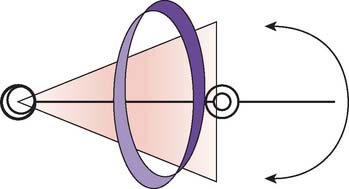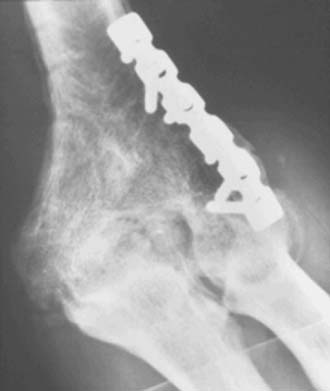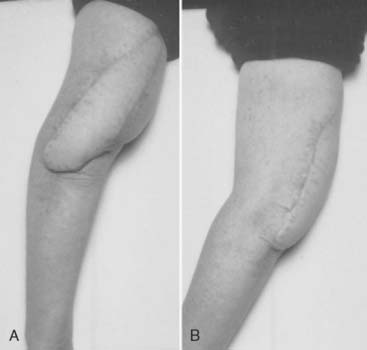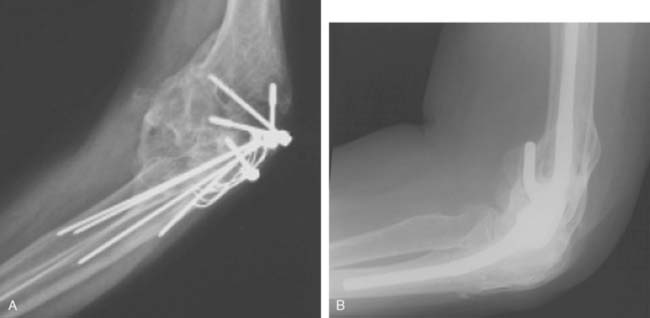CHAPTER 58 Total Elbow Arthroplasty as a Salvage for the Fused Elbow
INTRODUCTION
The ankylosed elbow occurs spontaneously or after formal intent. In either instance, the functional outcome is usually not well tolerated. The reason for this is, first, there is no “optimum” position for elbow fusion. The joint is designed to position the hand in space and to one’s self. Second, the other joints compensate poorly for loss of elbow motion. Analysis of compensatory motion after an elbow arthrodesis has documented a compromised ability to complete activities, despite a significantly increased dependence on spine and wrist motion (Fig. 58-1).10 Furthermore, the shoulder plays only a modest role in compensation. For these reasons, there is continued value and interest in managing the stiff elbow by prosthetic replacement. The goal is to attain a functional arc of motion.7
INDICATIONS AND PATIENT SELECTION
The primary goal of total elbow arthroplasty is to restore motion to improvement function. We prefer a patient older than 60 years of age if the pathology follows trauma.8 However, pathologic and functional considerations may prompt replacement at an earlier age, especially in those with inflammatory conditions. Of note is that the extent of comorbidities that tends to exist in these patients further complicates the execution of the procedure.
Radioulnar, radiohumeral, or a combination of these synostoses, with complete loss of forearm rotation, may occur in more than 33% of patients (Fig. 58-2).11 The incidence of additional joint involvement in the ipsilateral and contralateral extremities was 77% and 46%, respectively, in our experience. In fact, in our experience, an isolated elbow fusion occurred in less than 10% of patients.
CONTRAINDICATIONS
Poor skin coverage is a relative contraindication that can be addressed by soft tissue procedures before the joint replacement (Fig. 58-3). Unwillingness to comply with the 5-kg single event, 1-kg repetitive weight restriction is a reason not to perform total elbow replacement. This implies those involved with heavy use of the extremity such as construction workers should not be offered this operation.
RADIOGRAPHIC EVALUATION
Usually, plane films are adequate. Size and quality of the bone, and angular deformity is noted. We pay close attention to the presence of the olecranon and determine by physical examination if the triceps is attached. The size of the medullary canal and presence and relevance of fixation devices is considered (Fig. 58-4).
EXPECTATIONS
Before surgery, the goals, limitations, and risks are very carefully explained to the patient. Expected outcomes are described based on our experience with approximately 20 cases.5,11
Stay updated, free articles. Join our Telegram channel

Full access? Get Clinical Tree












